Stanytsia Luhanska Bridge is Broken
Winter is coming — a decrepit bridge, military
Stanytsia Luhanska Bridge is Broken

Winter is coming — a decrepit bridge, military positions, and growing dangers to civilian life
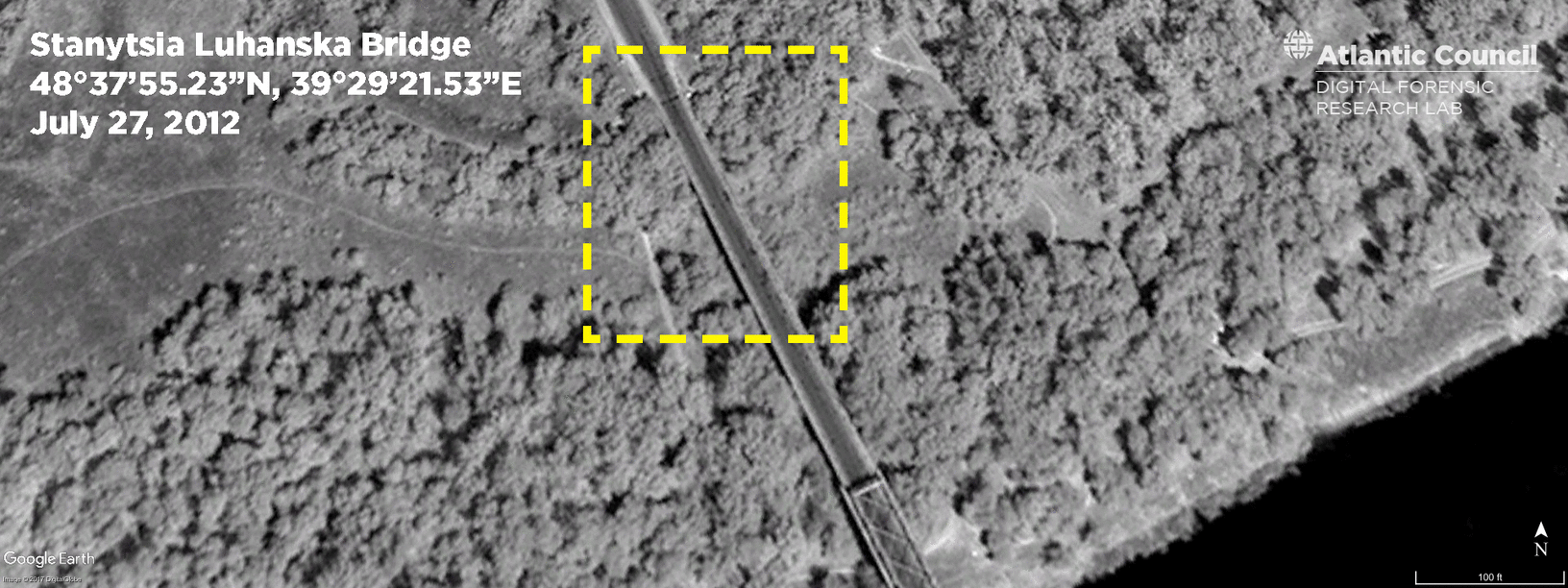
As winter quickly approaches, the Stanytsia Luhanska bridge continues to be a key concern in the conflict in eastern Ukraine. Well-documented shelling damage to the bridge over the course of the conflict has left it decrepit and created a significant safety hazard to the thousands of civilians crossing the bridge daily.
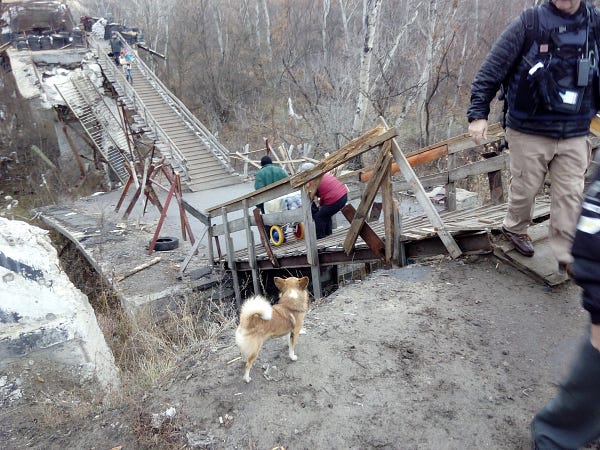
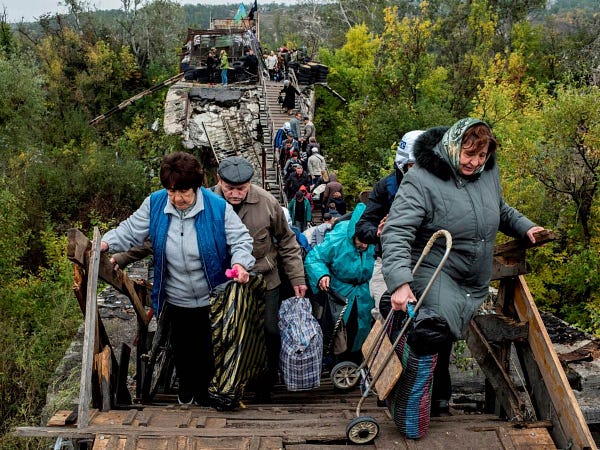

As with other tenuous points in the conflict in the Donbas, military positions embedded in civilian areas pose a unreasonably dangerous threat to life on the contact line. Military positions litter the areas around the Stanytsia Luhanska bridge on both sides of the contact line. In the map below, @DFRLab outlined some of these areas.
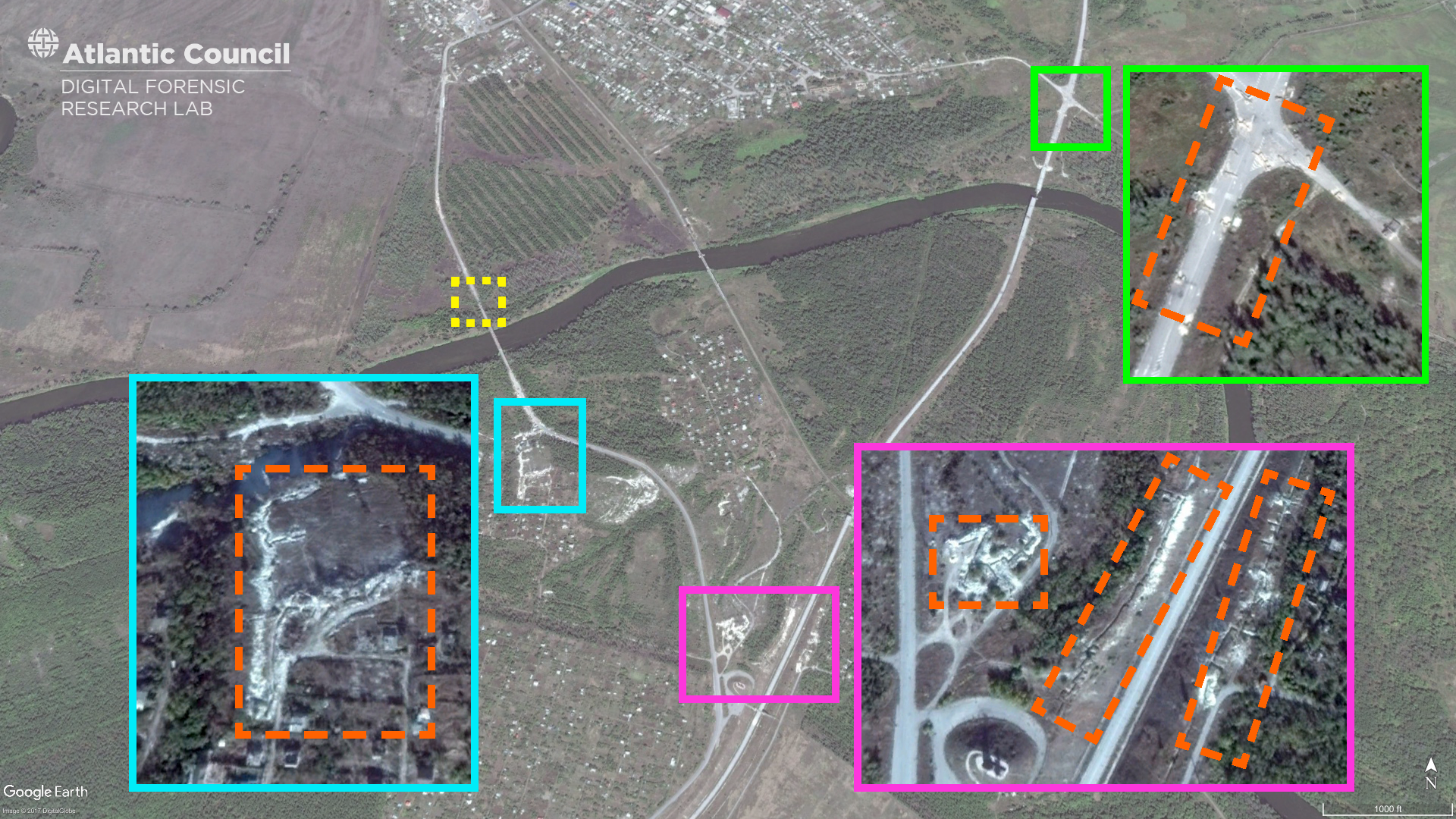

The bridge supports thousands of pedestrians crossing per day adding up to some 200,000–300,000 per month, most of whom are elderly, crossing to visit relatives and property, shopping and banking, and for legal services.
In April 2017, the International Committee of the Red Cross (ICRC) reported approximately 6,000 people cross the checkpoint each day.

The United Nations Office for the Coordination of Humanitarian Affairs’ (UN OCHA) hazard map for the Stanytsia Luhanska crossing point highlights the humanitarian situation surrounding the bridge. UN OCHA reported that as of September 1, all five points of entry and egress along the entire line of contact reduced their operational hours; however, the number of crossings are relatively unchanged, leading to longer crossing times in inhospitable winter conditions and increasingly dangerous security conditions with higher levels of kinetic activity and ceasefire violations.

Hours of operation seem to have decreased even further since September 1, with the Stanytsia Luhanska VKontakte social media page announceing that as of October 29, the crossing points will only be open from 08:00–17:00 in an attempt to decrease the security risks imposed to people crossing. As most fighting occurs in the dark, with reduced daylight hours, the time frame for fighting has increased. Decreased operating hours frequently leave civilians stranded at closed crossing points in inhospitable conditions, as outlined by the graphic above. Civilians are without bomb shelters at both checkpoints and face insufficient access to basic necessities.

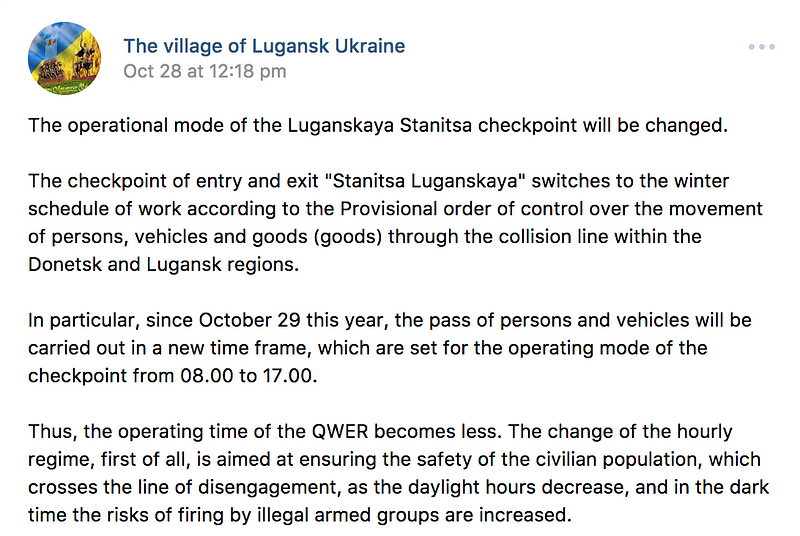
In the OSCE SMM daily report published on October 31, the poor state of the bridge was described as follows:
The SMM continued to observe the poor condition of the wooden ramps at the broken section of the Stanytsia Luhanska bridge (15km north-east of Luhansk), which has continued to deteriorate and still shakes as people cross it. The SMM assessed that walking over the wooden bridge poses a security risk to pedestrians, including SMM monitors.
Additionally, SMM monitors were unable to access parts of the Stanytsia Luhanska disengagement area (see map below) due to security restrictions with the possible presence of mines and UXO. As @DFRLab previously reported, mines and UXO pose an ongoing threat to civilians and soldiers in eastern Ukraine.
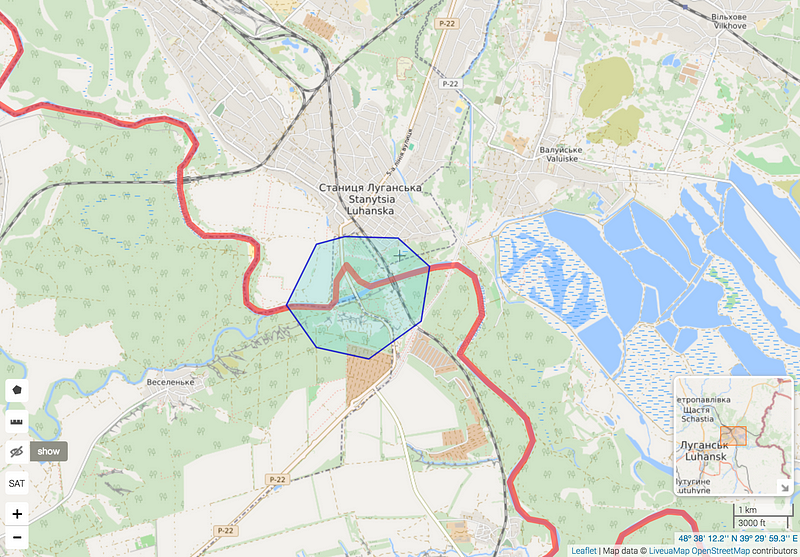
Following the OSCE SMM report, a post in the same aforementioned Stanytsia Luhanska VKontakte social media group reported that the elderly (referred to as pensioners) can be transported across the bridge via a wheelchair “service” that costs UAH 100 (approximately USD 4) with luggage costing UAH 20–100 (approximately USD 1–4).


The OSCE SMM regularly reports on the condition of the Stanytsia Luhanska bridge and corresponding checkpoints. The mission’s observations of the situation remain essential; however, the local population’s frustration with the situation has fostered an environment for disinformation and negative sentiment against the SMM. Despite the OSCE SMM mandate being clear in its observatory status, the local population questions the SMM’s intentions in difficult situations such as this one.
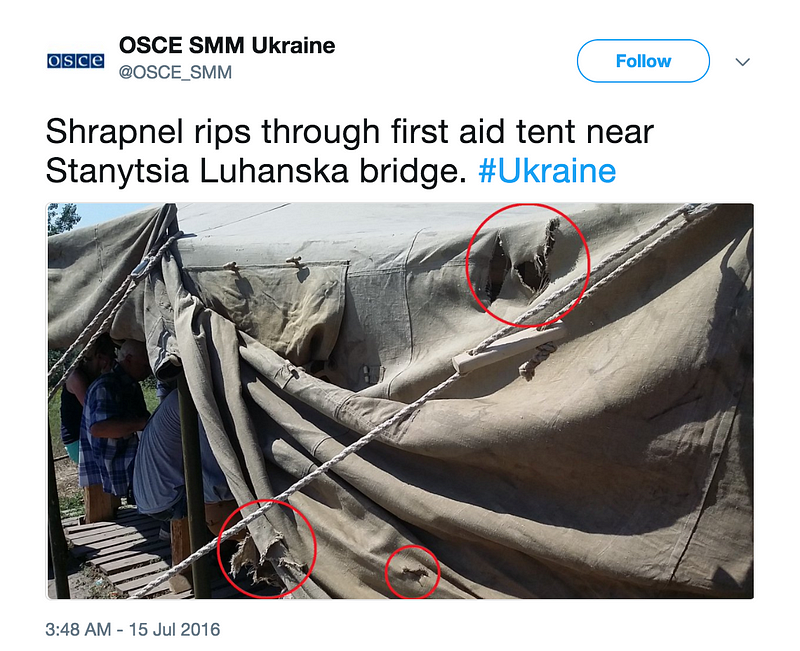
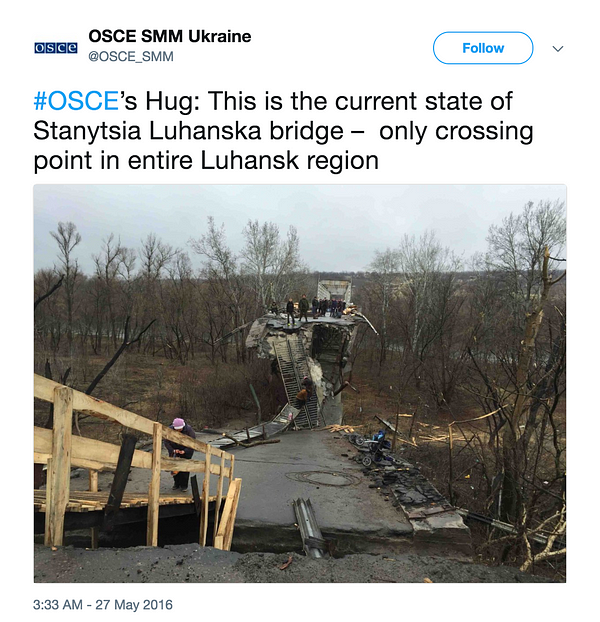
The bridge’s condition has deteriorated significantly and is on the verge of collapse. Failure of the sides to disengage the area, withdraw prohibited weapons, and establish security parameters prevents the ICRC from repairing the bridge, despite being ready to do so for over a year. If the sides do not organize soon, the only crossing point in the entirety of Luhansk Oblast is unlikely to make it through the upcoming winter season.
Follow the latest Minsk II violations via the @DFRLab’s #MinskMonitor.
Also, follow @DFRLab on Twitter for more in-depth analysis from our #DigitalSherlocks.

